Soft and Light Butterless Margherita Cake.
The Margherita cake is a classic of homemade patisserie: simple, fragrant, and soft, perfect for breakfast or a genuine snack. In this version, I wanted to lighten it by completely removing the butter, choosing a lighter mix based on oil, and also reducing the amount of sugar.
The result? A very soft and airy cake, perfect to enjoy in slices even for several days, perhaps accompanied by a cup of tea or coffee.
After some experimentation, I found the ideal balance: only 110 g of sugar, which does not compromise the softness, and rice oil as the fat part, neutral in flavor and suitable for sweet preparations.
I baked it using the ventilated oven’s patisserie function, which helped it rise well and gave it a light-as-cloud texture.
To keep it soft longer, I followed a little trick I’ll reveal among the tips.
This version is perfect even for the little ones, not too sweet and without heavy fats, and can be the ideal base for light fillings or to be enjoyed naturally, simply with a dusting of powdered sugar. A dessert that smells of home and simplicity, but with some extra care for those who want to eat well without sacrificing taste.
Before moving on to the recipe for the soft and light butterless Margherita cake, I recommend taking a look at the other interesting recipes and the FAQs, tips, and variations at the bottom.
And if you don’t have the Bimby or are without a scale, you’ll also find the adapted versions.
READ THE TIPS, VARIATIONS, AND FAQs.
OTHER INTERESTING RECIPES NOT TO MISS:
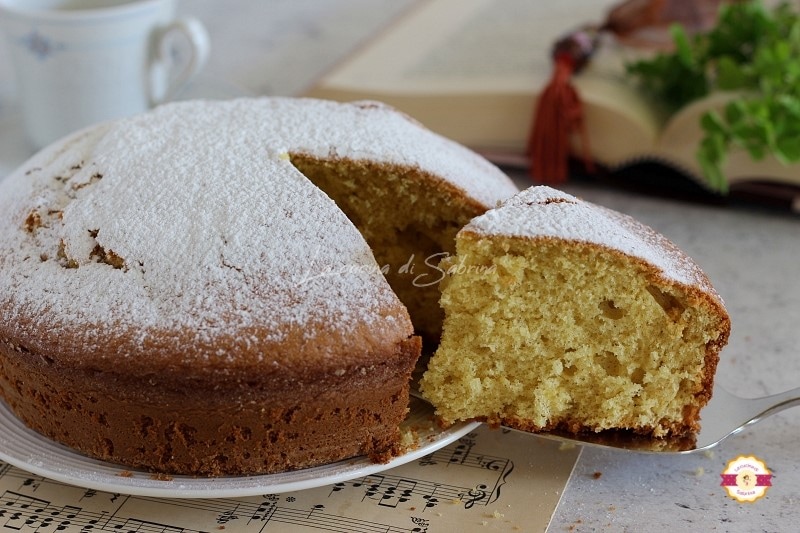
- Difficulty: Very Easy
- Cost: Economical
- Preparation time: 5 Minutes
- Portions: 8 Pieces
- Cooking methods: Oven
- Cuisine: Italian
- Seasonality: All Seasons
Ingredients
- 3 eggs (medium)
- 110 g granulated sugar
- 3/8 cup rice oil
- 3/8 cup oat milk (or other plant-based milk or regular milk)
- 1 3/4 cup type 1 flour (or 00)
- 1 packet baking powder
- lemon zest (organic)
- vanilla
- powdered sugar
Tools
- 1 Cake Pan 8 inches
- Hand Mixer
- Grater
Steps
Put the sugar and lemon zest in the bowl: 10 sec. speed 10.
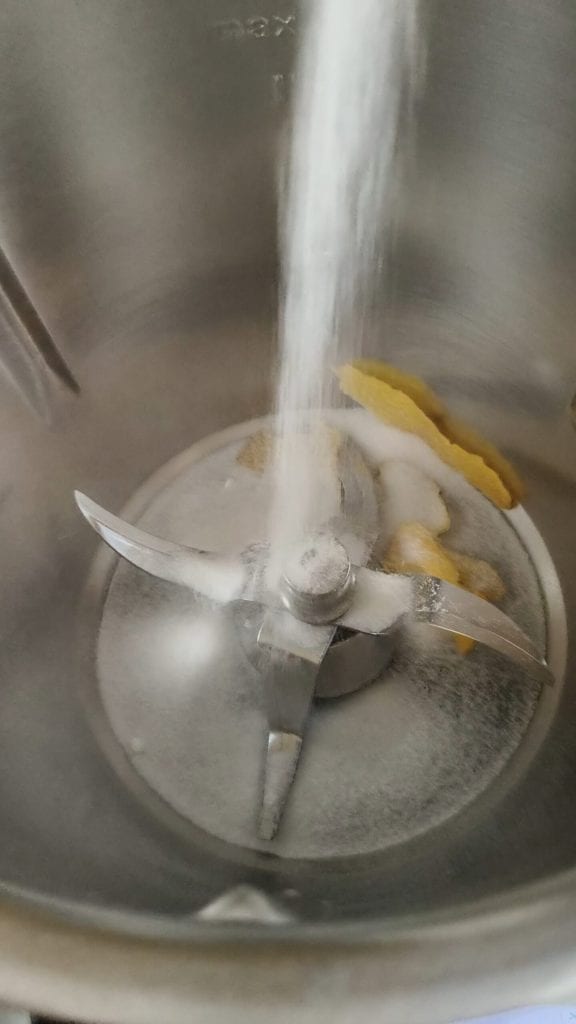
Add the eggs:
2 min. 99°F speed 4 (if the eggs are cold from the fridge) or 1 min. speed 4 (if they are at room temperature).
Pour in the rice oil and milk: 30 sec. speed 4.
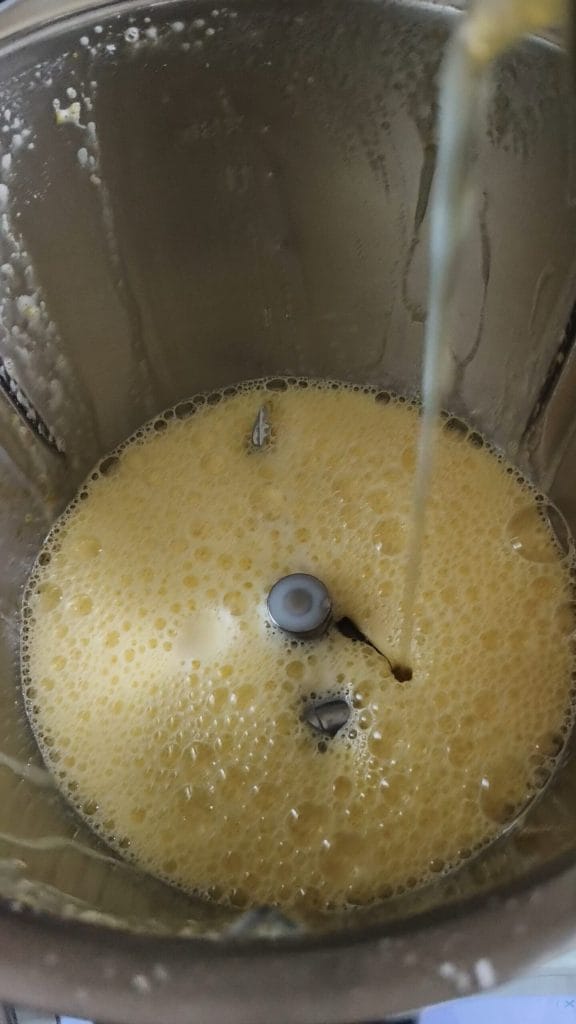
Add the vanilla, flour, and baking powder: 40 sec. speed 5, using the spatula if necessary.
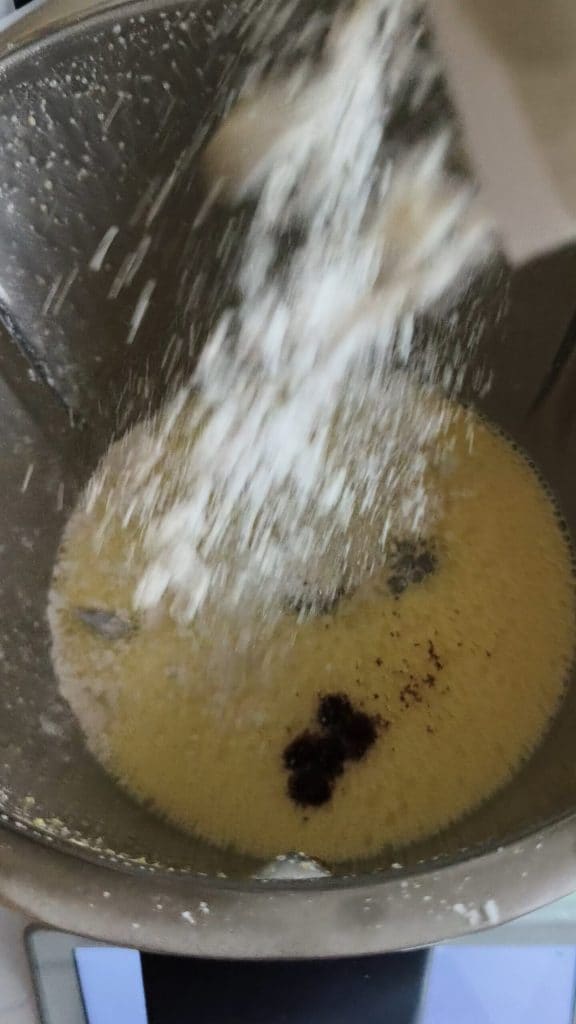
Pour the batter into the greased and floured mold and bake in a static oven at 340°F for 35–40 min. Or with patisserie function (depending on the oven)
Perform the skewer test. Once out of the oven, let it cool well and then unmold and sprinkle with powdered sugar when it is completely cold.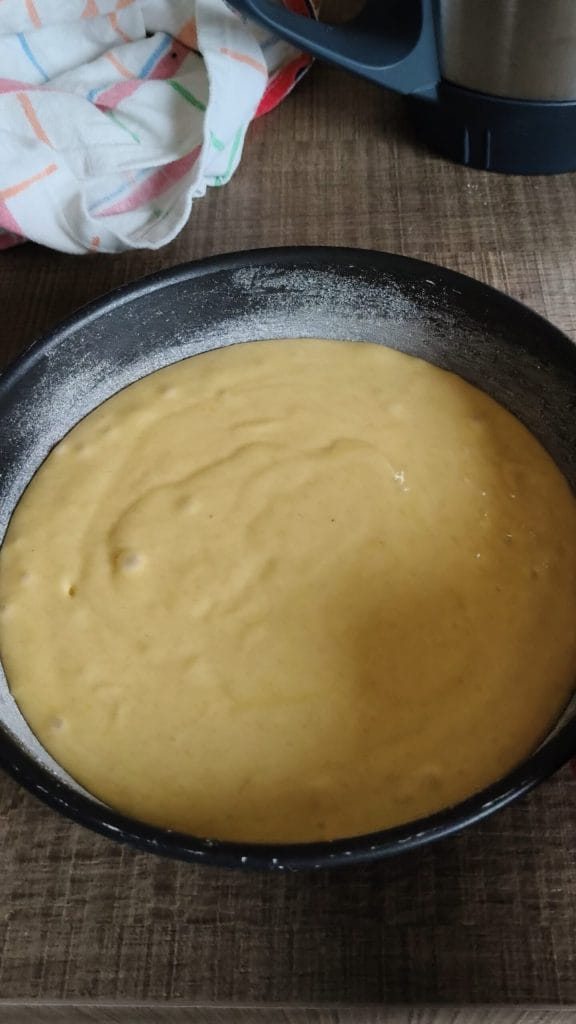
Procedure without Bimby
Whisk the eggs with the sugar.
In a large bowl, crack the room temperature eggs and combine with the sugar. Whisk with the electric beaters for at least 5-6 minutes, until you get a light, fluffy, and frothy mixture.
Add the liquids.
Pour in the oil and room temperature milk in a thin stream while continuing to whisk at low speed.
Combine the powders.
In a separate bowl, sift the flour and baking powder together. Add it a little at a time to the whipped mixture, mixing gently from the bottom up with a spatula, so as not to deflate the batter. Add the flavorings (grated lemon zest and vanilla).
Pour into the mold.
Line the bottom of the 8-inch mold with parchment paper and lightly grease the edges. Pour the batter and gently level the surface.
Baking.
Bake in a preheated oven at 320°F patisserie function (or fan) for about 45 minutes. Perform the skewer test before removing from the oven.
Let cool.
Once cooked, let it cool in the mold for 10-15 minutes, then unmold and transfer to a wire rack. Once cold, dust with powdered sugar.
Approximate measurements in tablespoons (if you don’t have a scale)
Whole eggs → 3 medium (not convertible to tablespoons).
Sugar → about 7 heaping tablespoons
(1 heaping tablespoon ≈ 15 g of granulated sugar).
Type 1 flour → about 9 heaping tablespoons
(1 heaping tablespoon ≈ 15 g of flour).
Milk → about 5 tablespoons
(1 tablespoon ≈ 12-15 ml).
Rice oil or other light oil → about 6 and a half tablespoons
(1 tablespoon ≈ 14 ml).
Baking powder → about 2 level teaspoons
(1 packet of 16 g = 2 ample level teaspoons).
Tips:
For an even softer cake: as soon as you take it out of the oven, cover it with a clean tea towel and let it cool. This trick, also used for brioches, helps retain internal moisture.
Cooking check: every oven is different. If using the ventilated patisserie function, watch the cake after the first 35-40 minutes and always do the skewer test.
Ideal mold: an 8-inch mold is perfect for a tall and soft cake. If using a larger mold, it will be shorter and bake sooner.
Variations and substitutions:
Oil: if you don’t have rice oil, you can replace it with corn or sunflower oil. Alternatively, a mix of mild olive oil and water may work.
Flour: type 1 flour gives more structure and a rustic flavor, but you can also use all-purpose flour or half whole wheat for a similar effect.
Sugar: the amount used (110 g) is already reduced, but you can partially replace it with honey or brown sugar, keeping in mind it will change the texture.
FAQ (Questions and Answers)
Can this cake be filled?
Yes, by cutting it into two discs you can fill it with jam, light cream, or sweetened Greek yogurt. It is stable but remains soft.
Can it be frozen?
Yes, better as individual slices already portioned. Wrap them in plastic wrap and then put them in a freezer bag. When needed, slightly warm them in the microwave or let them defrost at room temperature.
How is it stored?
It remains soft for 3 days well closed in an airtight container or under a glass dome. If the environment is very dry, it is better to wrap it in parchment paper as well. To avoid the powdered sugar being absorbed, leaving the surface moist, it is advisable to sprinkle with non-hygroscopic powdered sugar (like the type used for pandoro).

